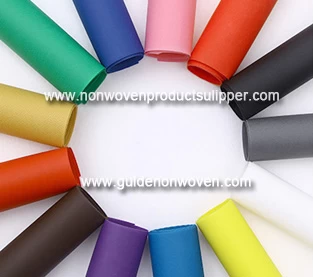1.
Non-woven fabrics materials have been widely used in many fields such as garments, medical and health care, filtration, prosthesis corrosion, agricultural protection, insulation and sound insulation. In different fields of application, we need to increase the performance of non-woven materials, such as: anti-bacterial, anti-static, flame retardant, soft, anti-aging, hydrophilic, anti-mildew and so on. By adding functional masterbatch method can increase one or several properties of non-woven fabric materials, the following functional masterbatch for a brief introduction.
2. Functional masterbatch introduction
(1) Flame retardant masterbatch
Non-woven fabrics in clothing, construction, automotive, decoration and other fields widely used. Its flame retardant properties also put forward higher requirements. Flame retardant masterbatch can be added in the preparation process of the material to effectively improve the flame retardancy of the product.
(2) Antibacterial masterbatch
In the living environment of human beings, what kind of microorganisms can not be seen by the naked eye is ubiquitous. Bacteria, fungi and other pathogens are the main factors affecting human health. Therefore, the development of antibacterial functional materials has aroused widespread concern.
(3) Anti-aging masterbatch
Macromolecular materials may deteriorate during all stages of their synthesis, storage, processing and end-use, ie, material properties such as yellowing, cracking of the surface of the article, loss of gloss, reduction of impact strength and the like; Tensile strength and elongation at break and other mechanical properties decreased, thus affecting the normal use of products, this phenomenon is the aging of polymer materials. Aging of non-woven fabric materials can generally be based on different applications choose different anti-aging masterbatch to solve.

(4) Antistatic masterbatch
Antistatic agent categories: a class of conductive materials, such as: carbon black, carbon fiber, stainless steel microfilament, conductive polymers. The other is to adsorb airborne water molecules. Such antistatic agents are polar compounds with hydrophilic hydrophilic groups whose hydrophilic groups can adsorb water molecules around the air onto the material, such that The surface resistivity of the material is reduced and the static electricity is eliminated. Such as: glycerol monostearate, N, N-bis (2-hydroxyethyl) fatty acid amide and its ester mixture. Back-class antistatic agents are more often used to prepare antistatic masterbatches.
(5) Hydrophilic masterbatch
Polyolefin nonwovens are poorly
hydrophilic and require improved hydrophilicity in certain applications such as baby diapers, masks, medical wound patches, and the like.
(6) Flexible masterbatch
Conventional polypropylene avant-garde due to thermal bonding temperature is high, feel soft money, the status of non-woven fabric materials used as thermal bonding fibers is limited. Users want to use polypropylene fiber melting point down to 140 ℃ or even below 130 degrees Celsius, in order to adapt to non-woven thermal bonding production of higher speed and reduce energy consumption. If the melting point is too high, it is very hard to make a non-woven fabric with a high strength and a soft touch. Therefore, polypropylene fibers need to be modified to increase their flexibility and reduce the thermal bonding temperature. By adding soft masterbatch in the preparation process can effectively reduce the melting point of the fiber to improve the flexibility of polypropylene fiber.
(7) Negative ion masterbatch
It has been shown that negative ions can regulate the excitement and inhibition of the central nervous system and improve the function of the cerebral cortex. Increasing the amount of oxygen absorbed and the amount of carbon dioxide emissions can promote the body's metabolism, speed up the redox process and increase the body's immunity force. In recent years, negative ion products are also more and more people of all ages.
(8) Mildew masterbatch
Mold brings many inconveniences to our life, such as food, mildew of clothes and so on.
With the application of nonwovens material more and more areas of light, functional requirements more and more for the functional masterbatch enterprises, both an opportunity and a challenge. We must have keen insight, keep up with the footsteps of the market, focus on new product development. Functional masterbatch trends: composite multi-functional masterbatch, such as: anti-mildew deodorant masterbatch, hydrophilic soft masterbatch, anion far-infrared masterbatch and so on. Low added amount of high-performance masterbatch, such as: the choice of high-performance nano-filler, choose a suitable dispersant to enhance the dispersion of the filler.
